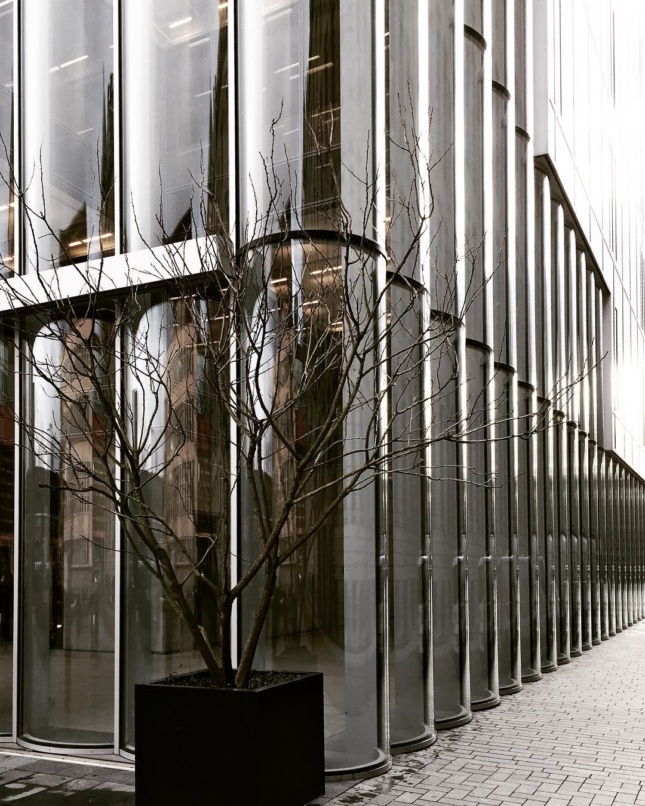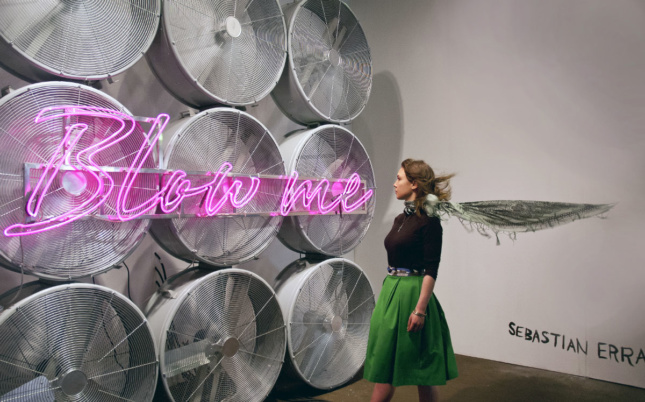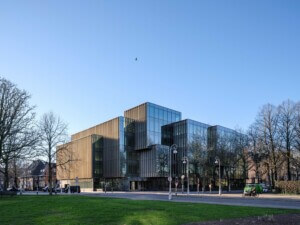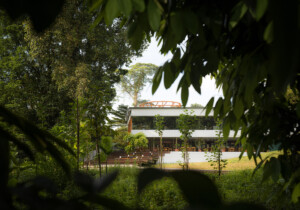With 800 million active users and 95 million photos and videos shared each day, Instagram is affecting our visual perception like no other platform. Users distribute literally millions of photos, spreading trends, popularizing places, and ultimately, influencing built and designed environments.
Although it is still early for major buildings to outwardly reflect Instagram’s impact, architecture is rapidly becoming saturated from the inside out. Philippe Maidenberg, known for his interior work in hotels across Paris and the UK, including the Holiday House London, is very aware of how social media has altered clients’ expectations. “Clients have shifted from thinking about design to envisioning new ways of life,” he explained. “Hotel owners want public spaces that are more alive and more comfortable than ever before; office owners want spaces that look like hotels. The standards are getting higher and higher for the greater good.”
In New York, firms like Paperwhite Studio and Home Studios have made veritable reputations from crafting “Instagrammable interiors” for restaurants such as Jack’s Wife Freda, Cha Cha Matcha (Paperwhite), and Elsa, Ramona, Sisters, and The Spaniard (Home Studios). Rich, memorable colors, personal touches—down to the custom sugar packets—and dramatic moments such as sweeping brass lamps and neon signs all apparently contribute to the restaurants’ Instagram popularity.

@eatingwholefully, @justaskalice, @lynnfrdx, @drinksmoothiesdosquats,@thelilacpress, @blogilates, @yunalah, @bydarby, @alannaashleystyle,
@lesgourmistes, @jkeller.interiors, and teena_wang, via Instagram)
Maidenberg believes the portmanteau “Instagrammable” merely means photogenic: “In reality, every space inside a project has to be ‘Instagrammable.’ There is a similar way of thinking among architects, directors, and photographers. On the top of their minds, they’re always considering, ‘What will visitors see when they see the building? When they go inside the building? How can we surprise them?’”
Obviously, the basic notion of creating photogenic architecture is not new. It can almost be simplified to a 21st-century version of Robert Venturi and Denise Scott Brown’s “ducks” versus “decorated sheds” in Learning From Las Vegas. But although there are definite parallels to postmodernism replacing modernism and maximalism writ large in pastel whimsy replacing high-minded minimalism, new equivalent definitions of ducks and decorated sheds remain murky.

Somewhere in this vague category is the plethora of “museums” that opened in 2017. More pop-up galleries than actual museums, these repositories of vibrant mise-en-scènes provide opportunities for snap-happy visitors to create totally next-level selfies to share with their friends. The most notable are the Museum of Ice Cream (New York, Los Angeles, San Francisco, and Miami), the Color Factory (San Francisco), and 29 Rooms (Los Angeles and Brooklyn). And by notable, we mean that going up against museums such as the Louvre, the Tate Modern, and the Museum of Modern Art, the Museum of Ice Cream landed the tenth spot on Instagram’s “Most Instagrammed Museums” list in 2017, and its Los Angeles location alone claimed the sixth top spot in “Most Instagrammed Museums in the U.S.”
Legitimate museums have taken note, crafting photo-worthy installations and creating hashtags to promote sharing across social media. “It’s a level of feedback that we have never really had before,” said Andrea Lipps, assistant curator of contemporary design at Cooper Hewitt Smithsonian Design Museum. “People do use the hashtags, and then we notice the trends of where people are taking these photos and how they are accessing the information and what they are interested in. It’s become a really valuable tool.”

But those whose work is on display may see it differently. Brooklyn-based artist and designer Sebastian Errazuriz believes that the best name for these spaces and our new era of obsessive image sharing is “prop art.”
“It is very disappointing to see work being misused as a prop for a self-portrait because when that happens, it stops being seen,” Errazuriz said. “And when more content is created just to be shared and to function as a prop, more people will see that as successful content to create and will emulate it.” At the same time, Errazuriz learned to harness the power of Instagram early when he created the entrance installation for the Collective Design Fair in 2013: a series of box fans that had “Blow Me” written across them in neon. “The ‘Blow Me’ fan, if you see it just by itself, is a funny association that is provocative and sexual in nature. But, when I get commissioned to design something like an entry piece in an art fair, I am essentially being told, ‘Go, Sebastian, do that thing you do, do the monkey dance, show me something impressive.’ So, in this case, I made a fan that literally blows them away. It takes a lot of balls for the artist to say ‘blow me,’ and it takes a lot of balls for the client to tell everyone to ‘blow me.’ Then, it has the neon pink which is the cliché of every art fair and was designed as a square precisely to be as Instagrammable as possible. It generated more press than the whole fair combined; and I did the monkey dance and it undermined the effects of the fair.… It was all about distilling enormous amount of stuff in one thing.”

Errazuriz was also concerned about the implications of the Snapchat x Jeff Koons Balloon Dog in Central Park. “There is a very real risk of corporations like Snapchat taking over the digital art space and dictating new representations of what art is, like Jeff Koons’s Balloon Dog,” Errazuriz said. “So when I saw that, everyone in my studio stopped what we were doing and in 24 hours managed to recreate an exact replica of the dog, tagged it with graffiti, uploaded it, geotagged it to the same destination, submitted it to Snapchat, and sent out the press release. I think it generated a lot of interesting articles about public space and the notion of virtual vandalizing.”

This is the inherent irony in Instagram: Even as designers and architects decry its influence, they are aware that they rely on it. Consider OMA: When it updated its website in 2014, the firm opted to change its landing page to an Instagram feed with software that picked up the geotagged images in a certain perimeter around OMA’s buildings and projects. “We’ve discovered that amateur pictures tell a different story,” said OMA partner Ippolito Pestellini Laparelli. “There are a lot of unexpected surprises and beautiful moments that are not as present in staged photography.”
Shifting the power of perspective to boundless viewers creates possibilities, but also engenders limitations. The art, design, and fashion worlds have already begun to chafe against the effects of shortened trend cycles, altered client demands, and distorted design priorities. Will architecture follow suit? #maybe.











